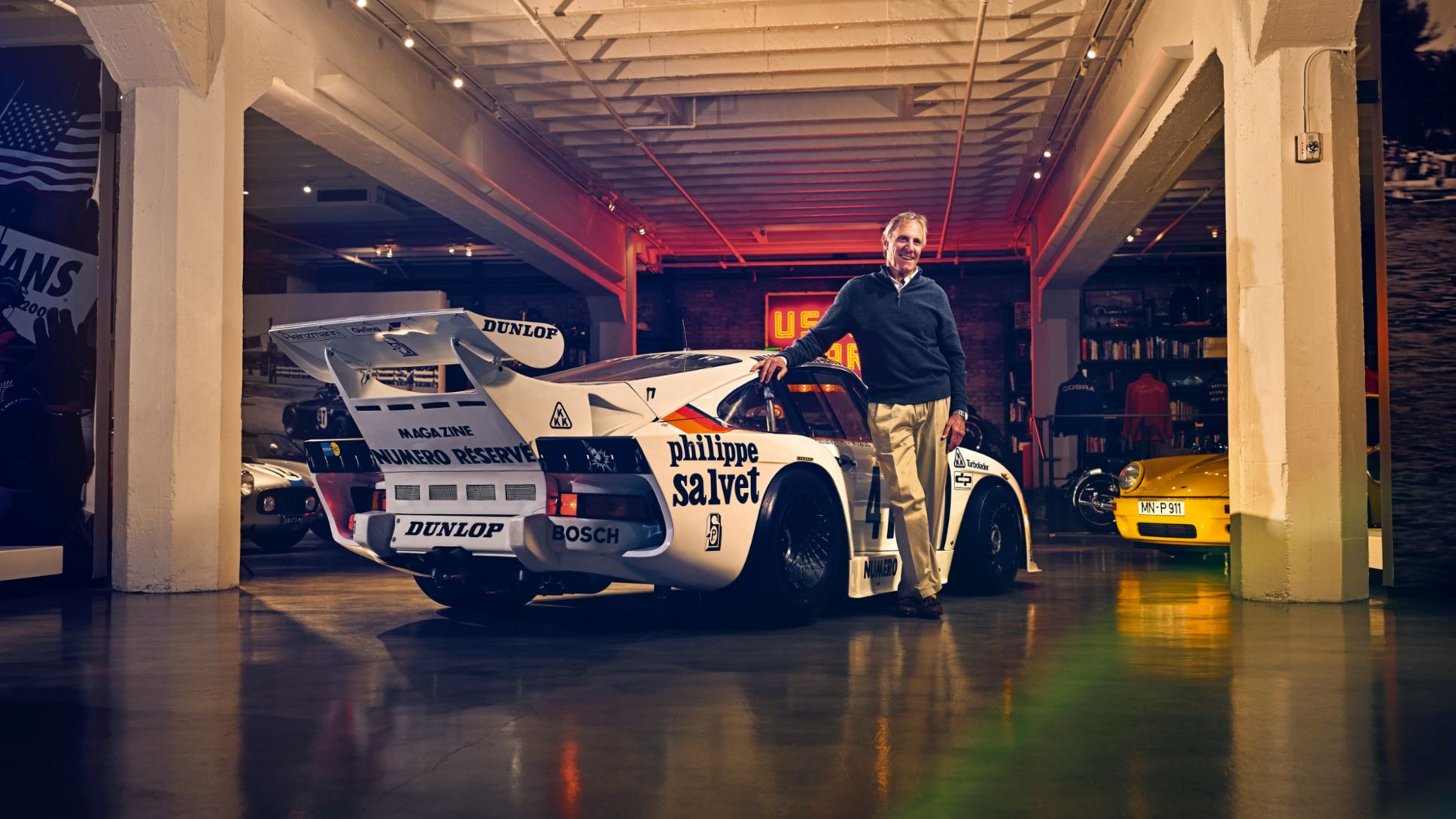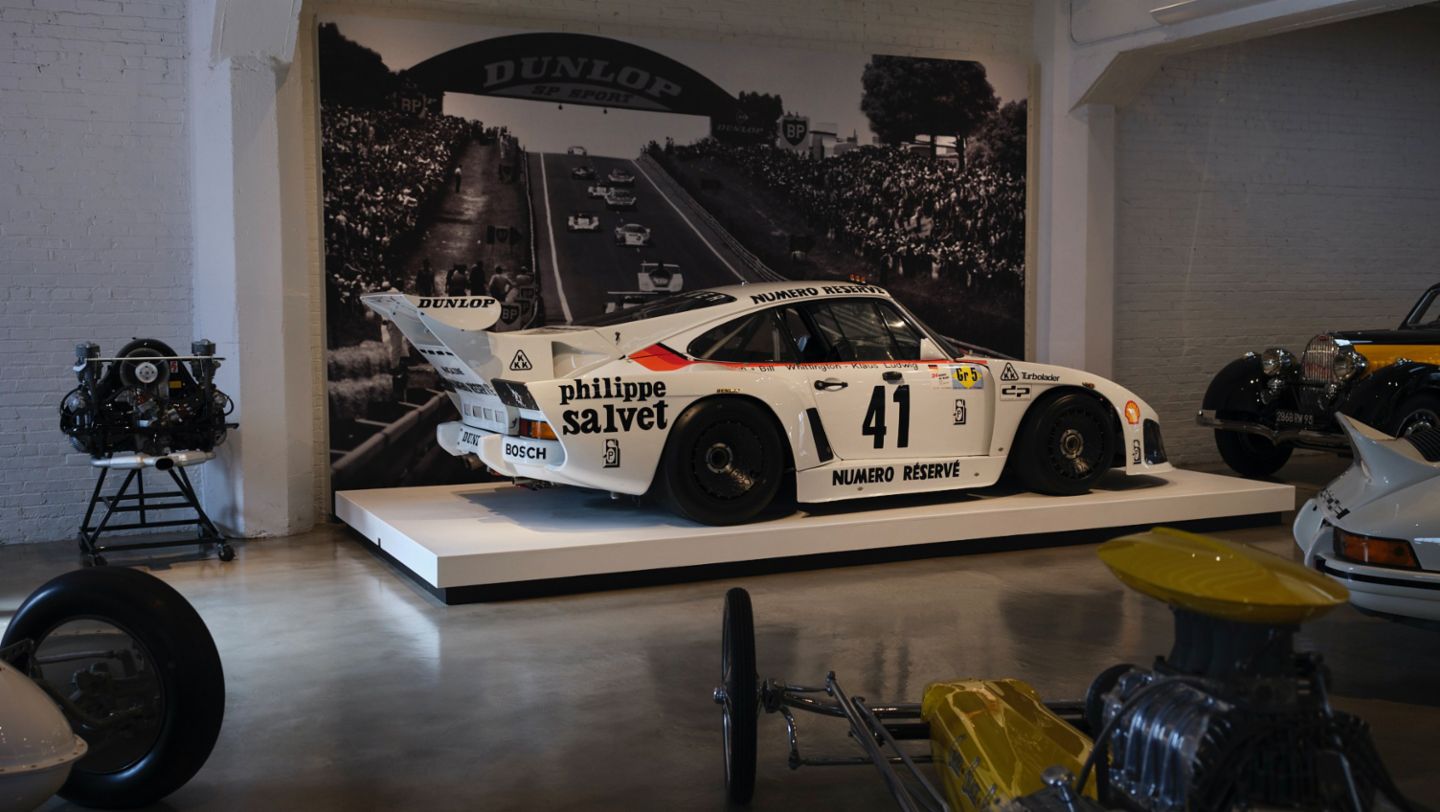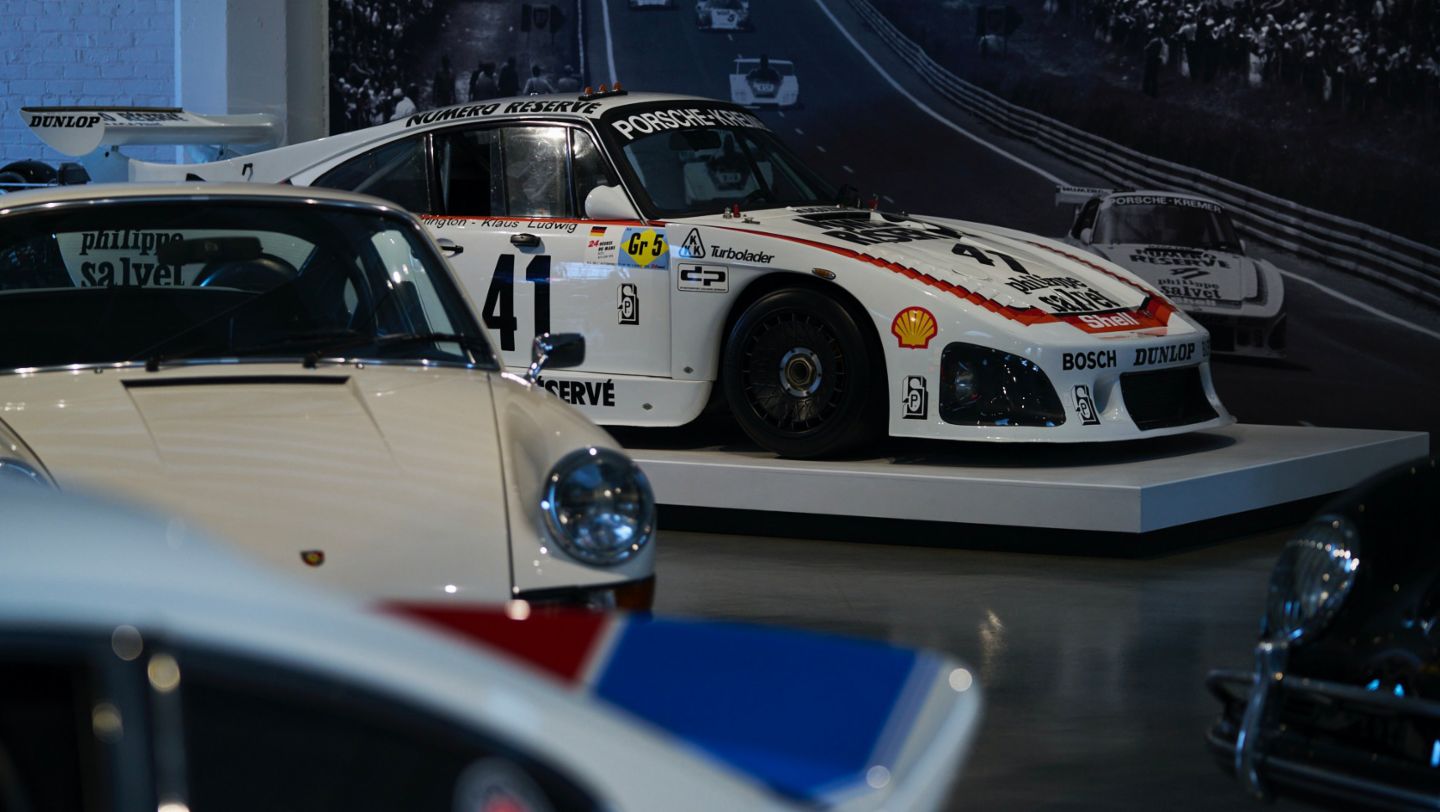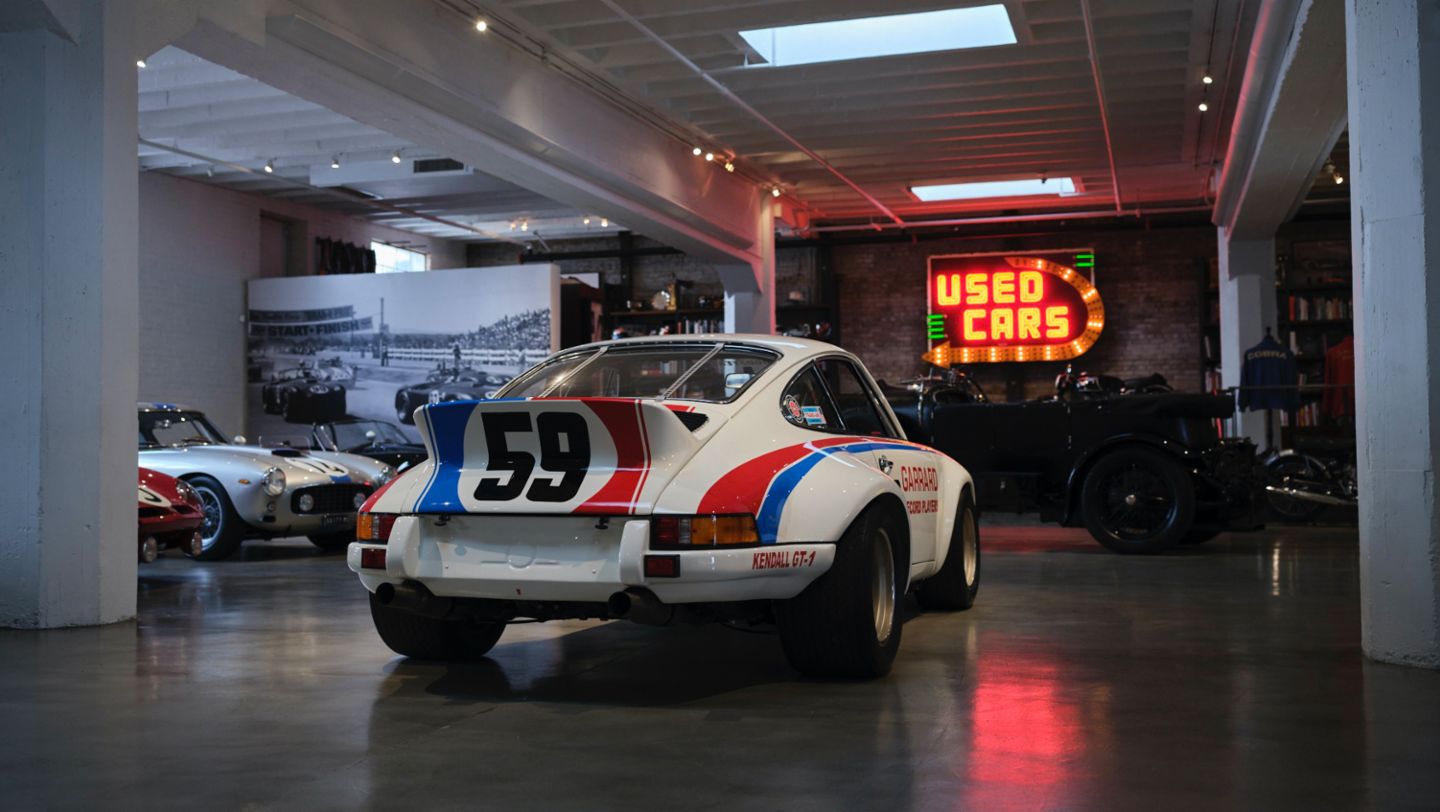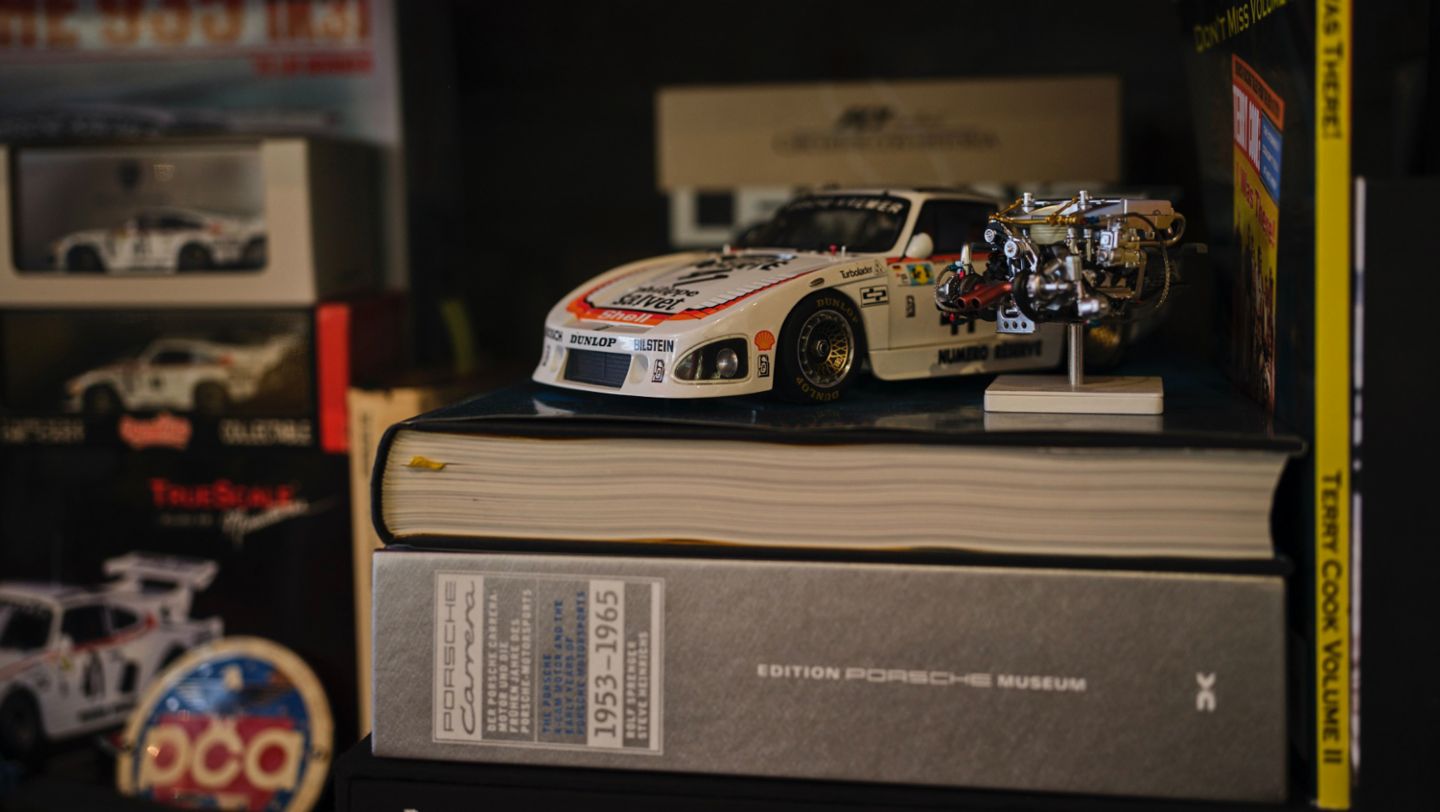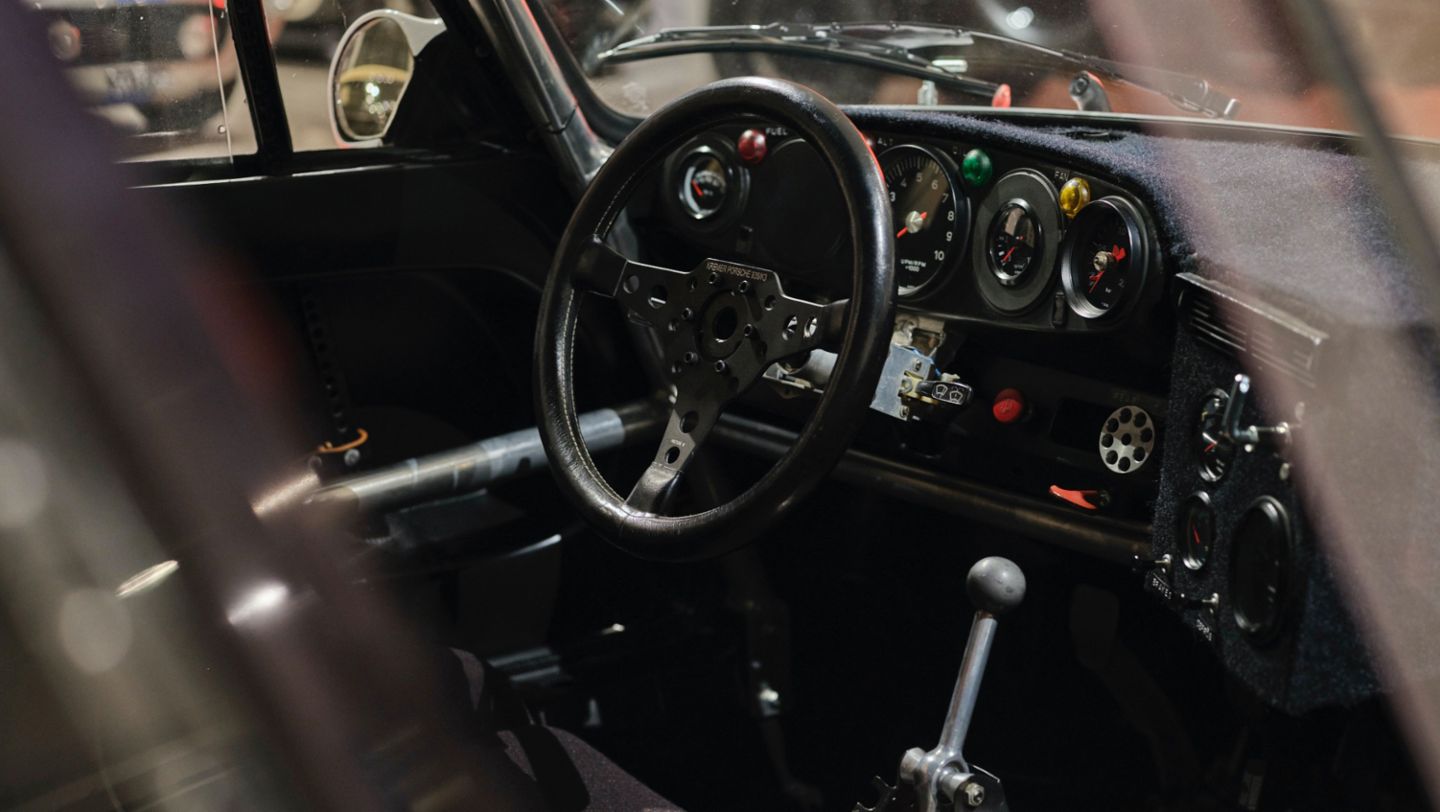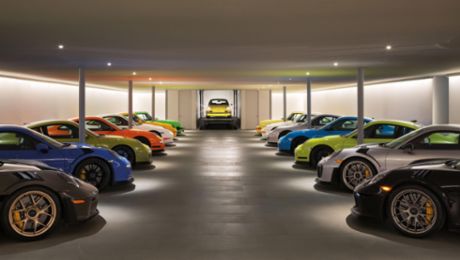“There’s Le Mans, and almost nothing else matters,” clarifies Bruce Meyer from the get-go. Exactly 100 years after the 24-hour race was first held, the California native wishes to show us an extra special vehicle – the overall winner of 1979. But first, the real estate investor who made a name for himself in the automotive world takes us on a tour of his garage. It is home to some of the planet’s most historically significant vehicles.
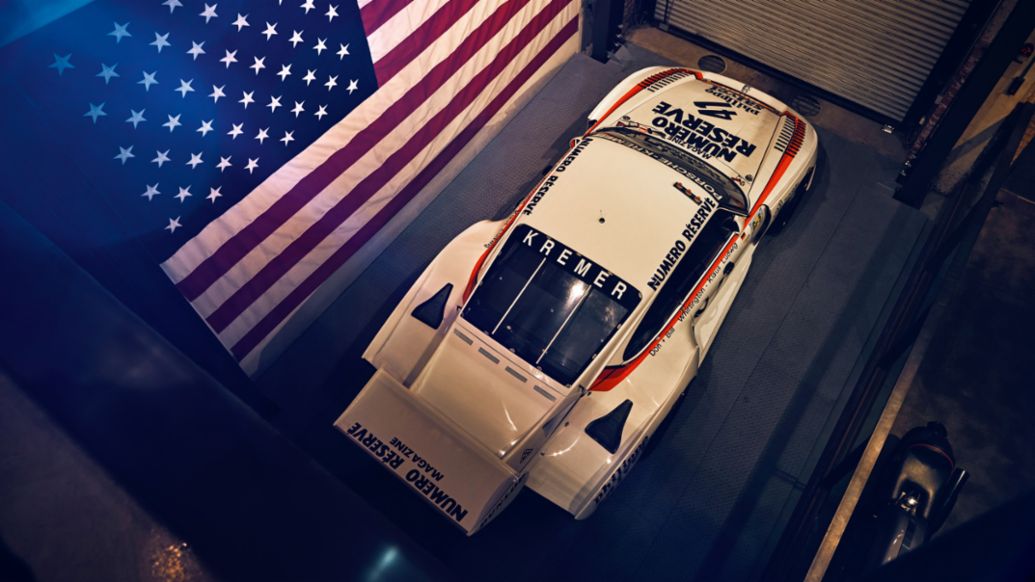
“I’ve always been drawn to competition,” Meyer divulges. “That sporting image is what drew me to Porsche originally.” After taking delivery in 1961 of his first model, a 356 Coupé, he embarked upon a love affair with the brand. The 81-year-old has since enjoyed owning and driving countless Porsche models for more than six decades, from road cars like the 356 A Speedster he later sold to Steve McQueen to a 1996 911 Turbo (993) and a 911 GT3 (992) with Touring Package.
Passion for cars in general, and the 24 Hours of Le Mans in particular
His Beverly Hills garage reveals evidence of Meyer’s passion for cars in general, and the 24 Hours of Le Mans in particular, including a large number of noteworthy Porsche vehicles, many of which have also been displayed at the Petersen Automotive Museum, which Meyer co-founded in 1994.

Take the 1973 911 Carrera RSR 2.8, for example. It was with this Brumos-prepped race car that Peter Gregg and Hurley Haywood won both the SCCA Trans-Am and IMSA GT Championships that year, in an unprecedented feat. But today, we are more interested in another vehicle in Meyer’s garage – the Kremer Porsche 935 K3. The 935 secured first place in Le Mans in 1979 with Klaus Ludwig, Don Whittington, and Bill Whittington at the wheel – as the first rear-engine vehicle to do so. And as the only race car based on the 911.
The 935 has a striking presence thanks to its sloped nose, aggressive fender fins, heavily contoured tail, and prominent rear spoiler. “Kremer would make maybe a hundred changes, to get a one percent advantage,” Meyer explains. Countless minuscule details aided top speed, from the tucked-in mirrors to the rain gutter design.
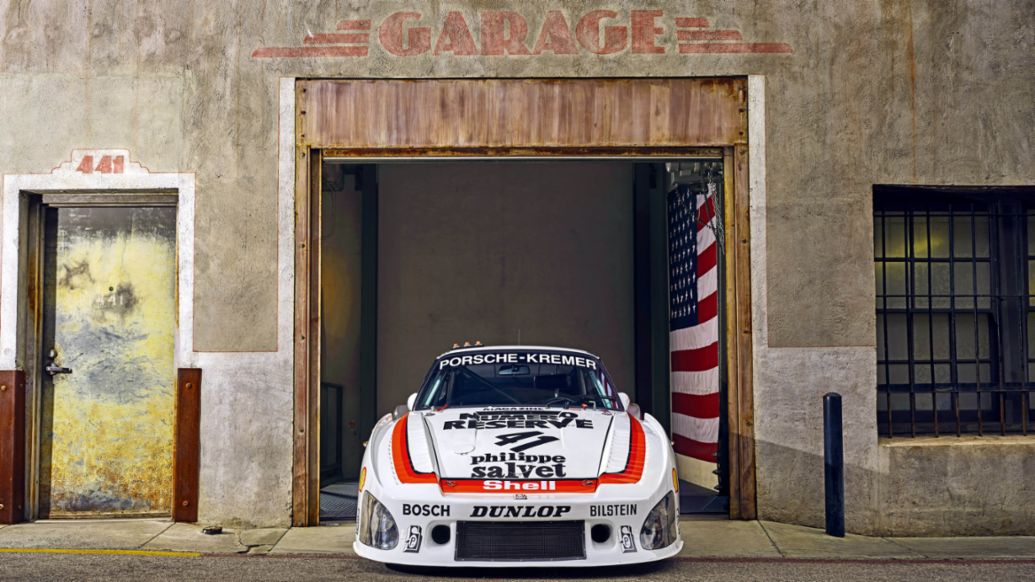
As much as the details are important, the soul of this machine is its 3.0-liter twin-turbocharged six-cylinder boxer engine. The power plant not only needed to deliver explosive power for passing, it had to sustain high speeds for hours on end and deliver responsiveness. “The 935 produces around 800 PS with no driver aids,” says Meyer. “For me, it’s about as extreme as it gets for an air-cooled 911 race car.” As with all of his cars, the 935 enjoys exercise, not to mention being shared at top gatherings like the Pebble Beach Concours d’Elegance and The Amelia, an event in Florida on an island of the same name, where it has won multiple accolades.
An automotive fanatic to the core
In his younger days, Meyer raced motorcycles, too. So he knows his limitations. “The 935 has already won Le Mans, so the only history I could add would not be good,” he quips. “When I drive it, it’s not at 10/10ths, I can tell you that.”
An automotive fanatic to the core, Meyer lives the Porsche lifestyle well beyond these rare race cars. He, his wife of 53 years Raylene, and his three children also enjoy driving Porsche models of more recent vintage in their daily lives. However, he takes special joy in sharing the exhibits that have made motorsport history. “I’ve taken the 935 across the country twice,” Meyer relates. “And it will take its third trip to the Porsche Rennsport Reunion in September.” The event held at the WeatherTech Raceway Laguna Seca in California is the world’s biggest gathering of classic Porsche race cars. “I feel such a privilege to be the custodian of this car,” says Meyer, who practices his very own collecting philosophy. “None of us take these cars with us. We don’t own anything. We can just enjoy them while we’re alive.”
Info
Text first published in the Porsche magazine Christophorus, No. 407.
Author: Basem Wasef
Photos: Lisa Linke
Copyright: All images, videos and audio files published in this article are subject to copyright. Reproduction in whole or in part is not permitted without the written consent of Dr. Ing. h.c. F. Porsche AG. Please contact newsroom@porsche.com for further information.
